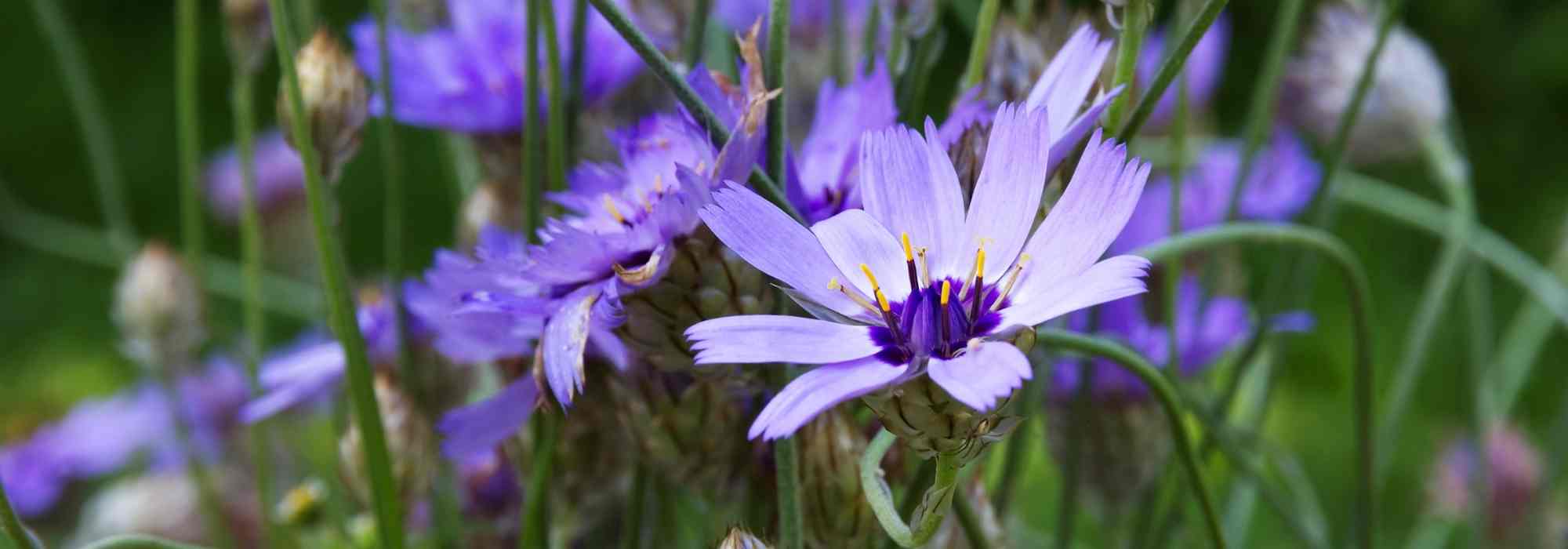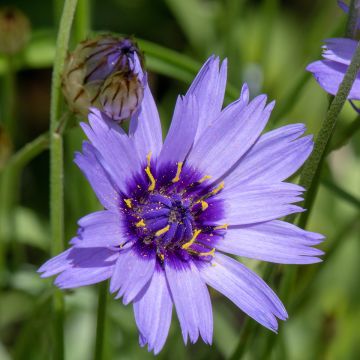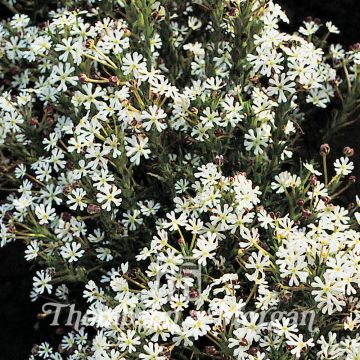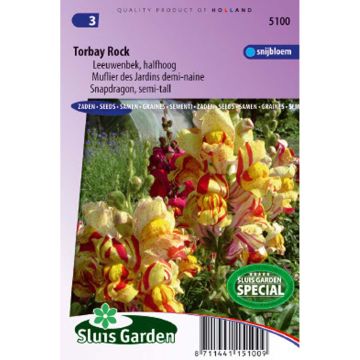

Catananche caerulea Bicolor


Catananche caerulea Bicolor
Catananche caerulea Bicolor
Catananche caerulea Bicolor
Cupid's Dart
Special offer!
Receive a €20 voucher for any order over €90 (excluding delivery costs, credit notes, and plastic-free options)!
1- Add your favorite plants to your cart.
2- Once you have reached €90, confirm your order (you can even choose the delivery date!).
3- As soon as your order is shipped, you will receive an email containing your voucher code, valid for 3 months (90 days).
Your voucher is unique and can only be used once, for any order with a minimum value of €20, excluding delivery costs.
Can be combined with other current offers, non-divisible and non-refundable.
Home or relay delivery (depending on size and destination)
Schedule delivery date,
and select date in basket
This plant carries a 6 months recovery warranty
More information
We guarantee the quality of our plants for a full growing cycle, and will replace at our expense any plant that fails to recover under normal climatic and planting conditions.
Would this plant suit my garden?
Set up your Plantfit profile →
Description
Able to bloom in the year of sowing, Catananche caerulea 'Bicolor' is the most beautiful of the white varieties. Also known as white Cupid's dart, this sun-loving hardy perennial of dry terrain generously blooms throughout the summer in small solitary, white and double heads, which are sometimes speckled with blue. They are carried by long slender stems above dense, grey-green basal foliage. Its paper-like textured flowers bloom from silver buds and retain their beauty in dried bouquets. This plant, often doomed to die in humid conditions, self-seeds abundantly in light soil.
Catananche caerulea is a short-lived perennial plant belonging to the Asteraceae family, native to the Mediterranean region. It can be found in dry meadows and grasslands, scrublands, hills, and along pathways, in poor, rocky and limestone soils, up to an altitude of 1500 to 1700m (4921 to 5577ft). The 'Bicolor' variety is a vigorous form, with white and double flowers. When in bloom, it forms an upright tuft 75cm (30in) tall and 30cm (12in) in diameter. Its growth rate is rapid. It can flower within a few months of sowing in summer, but winter humidity often causes premature death. Its basal leaves are linear, narrow, and evergreen, with a pretty grey-green and silky appearance. From June to August, depending on the sowing date, it produces small flowers measuring 3 to 3.5cm (1in) in diameter, displaying a double row of slender flowers at the tips, which are white or speckled with lavender-blue, with a darker centre. The flowering is abundant.
Cupid's dart is a solitary plant, but it is never as beautiful as when in the vicinity of a plant with grey foliage, such as artemisia or silver ragwort. It is a wandering perennial that loves the sun and tolerates drought very well, carefully choosing light soil where its spontaneous seedlings will emerge. It is also grown in mountainous regions. It is perfectly suited for dry meadows, inhospitable embankments, rockeries, or even borders. It can even be potted.
This plant was once used for the preparation of love potions, which explains its common name Cupid's dart. It goes well with sedums and artemisias, as well as with the blue alpine thistle.
Flowering
Foliage
Plant habit
Botanical data
Catananche
caerulea
Bicolor
Asteraceae
Cupid's Dart
Cultivar or hybrid
Other Catananche seeds
View all →Planting and care
Catananche caerulea thrives in well-drained, light, and preferably limestone soil. It enjoys dry conditions, so water moderately.
Sowing can be done directly in the open ground in April, in light and well-cultivated soil. Alternatively, sow in cold frames at a depth of 1.5cm (1in) in pots or trays in February-March, at 18 to 20°C (64.4 to 68°F), enclosing the seeds in a transparent plastic bag to maintain some humidity. When sowing, cover the seeds with 1.5cm (1in) of fine compost. Transplant into the open ground in May, after hardening off the young plants for 10 to 15 days in cooler conditions. Germination usually takes 21 to 25 days at 19 to 24°C (66.2 to 75.2°F).
Protect it from strong winds. If necessary, prune the faded flower stalks. This plant can be susceptible to powdery mildew.
Sowing period
Intended location
Planting & care advice
This item has not been reviewed yet - be the first to leave a review about it.
Similar products
Haven't found what you were looking for?
Hardiness is the lowest winter temperature a plant can endure without suffering serious damage or even dying. However, hardiness is affected by location (a sheltered area, such as a patio), protection (winter cover) and soil type (hardiness is improved by well-drained soil).

Photo Sharing Terms & Conditions
In order to encourage gardeners to interact and share their experiences, Promesse de fleurs offers various media enabling content to be uploaded onto its Site - in particular via the ‘Photo sharing’ module.
The User agrees to refrain from:
- Posting any content that is illegal, prejudicial, insulting, racist, inciteful to hatred, revisionist, contrary to public decency, that infringes on privacy or on the privacy rights of third parties, in particular the publicity rights of persons and goods, intellectual property rights, or the right to privacy.
- Submitting content on behalf of a third party;
- Impersonate the identity of a third party and/or publish any personal information about a third party;
In general, the User undertakes to refrain from any unethical behaviour.
All Content (in particular text, comments, files, images, photos, videos, creative works, etc.), which may be subject to property or intellectual property rights, image or other private rights, shall remain the property of the User, subject to the limited rights granted by the terms of the licence granted by Promesse de fleurs as stated below. Users are at liberty to publish or not to publish such Content on the Site, notably via the ‘Photo Sharing’ facility, and accept that this Content shall be made public and freely accessible, notably on the Internet.
Users further acknowledge, undertake to have ,and guarantee that they hold all necessary rights and permissions to publish such material on the Site, in particular with regard to the legislation in force pertaining to any privacy, property, intellectual property, image, or contractual rights, or rights of any other nature. By publishing such Content on the Site, Users acknowledge accepting full liability as publishers of the Content within the meaning of the law, and grant Promesse de fleurs, free of charge, an inclusive, worldwide licence for the said Content for the entire duration of its publication, including all reproduction, representation, up/downloading, displaying, performing, transmission, and storage rights.
Users also grant permission for their name to be linked to the Content and accept that this link may not always be made available.
By engaging in posting material, Users consent to their Content becoming automatically accessible on the Internet, in particular on other sites and/or blogs and/or web pages of the Promesse de fleurs site, including in particular social pages and the Promesse de fleurs catalogue.
Users may secure the removal of entrusted content free of charge by issuing a simple request via our contact form.
The flowering period indicated on our website applies to countries and regions located in USDA zone 8 (France, the United Kingdom, Ireland, the Netherlands, etc.)
It will vary according to where you live:
- In zones 9 to 10 (Italy, Spain, Greece, etc.), flowering will occur about 2 to 4 weeks earlier.
- In zones 6 to 7 (Germany, Poland, Slovenia, and lower mountainous regions), flowering will be delayed by 2 to 3 weeks.
- In zone 5 (Central Europe, Scandinavia), blooming will be delayed by 3 to 5 weeks.
In temperate climates, pruning of spring-flowering shrubs (forsythia, spireas, etc.) should be done just after flowering.
Pruning of summer-flowering shrubs (Indian Lilac, Perovskia, etc.) can be done in winter or spring.
In cold regions as well as with frost-sensitive plants, avoid pruning too early when severe frosts may still occur.
The planting period indicated on our website applies to countries and regions located in USDA zone 8 (France, United Kingdom, Ireland, Netherlands).
It will vary according to where you live:
- In Mediterranean zones (Marseille, Madrid, Milan, etc.), autumn and winter are the best planting periods.
- In continental zones (Strasbourg, Munich, Vienna, etc.), delay planting by 2 to 3 weeks in spring and bring it forward by 2 to 4 weeks in autumn.
- In mountainous regions (the Alps, Pyrenees, Carpathians, etc.), it is best to plant in late spring (May-June) or late summer (August-September).
The harvesting period indicated on our website applies to countries and regions in USDA zone 8 (France, England, Ireland, the Netherlands).
In colder areas (Scandinavia, Poland, Austria...) fruit and vegetable harvests are likely to be delayed by 3-4 weeks.
In warmer areas (Italy, Spain, Greece, etc.), harvesting will probably take place earlier, depending on weather conditions.
The sowing periods indicated on our website apply to countries and regions within USDA Zone 8 (France, UK, Ireland, Netherlands).
In colder areas (Scandinavia, Poland, Austria...), delay any outdoor sowing by 3-4 weeks, or sow under glass.
In warmer climes (Italy, Spain, Greece, etc.), bring outdoor sowing forward by a few weeks.




















































